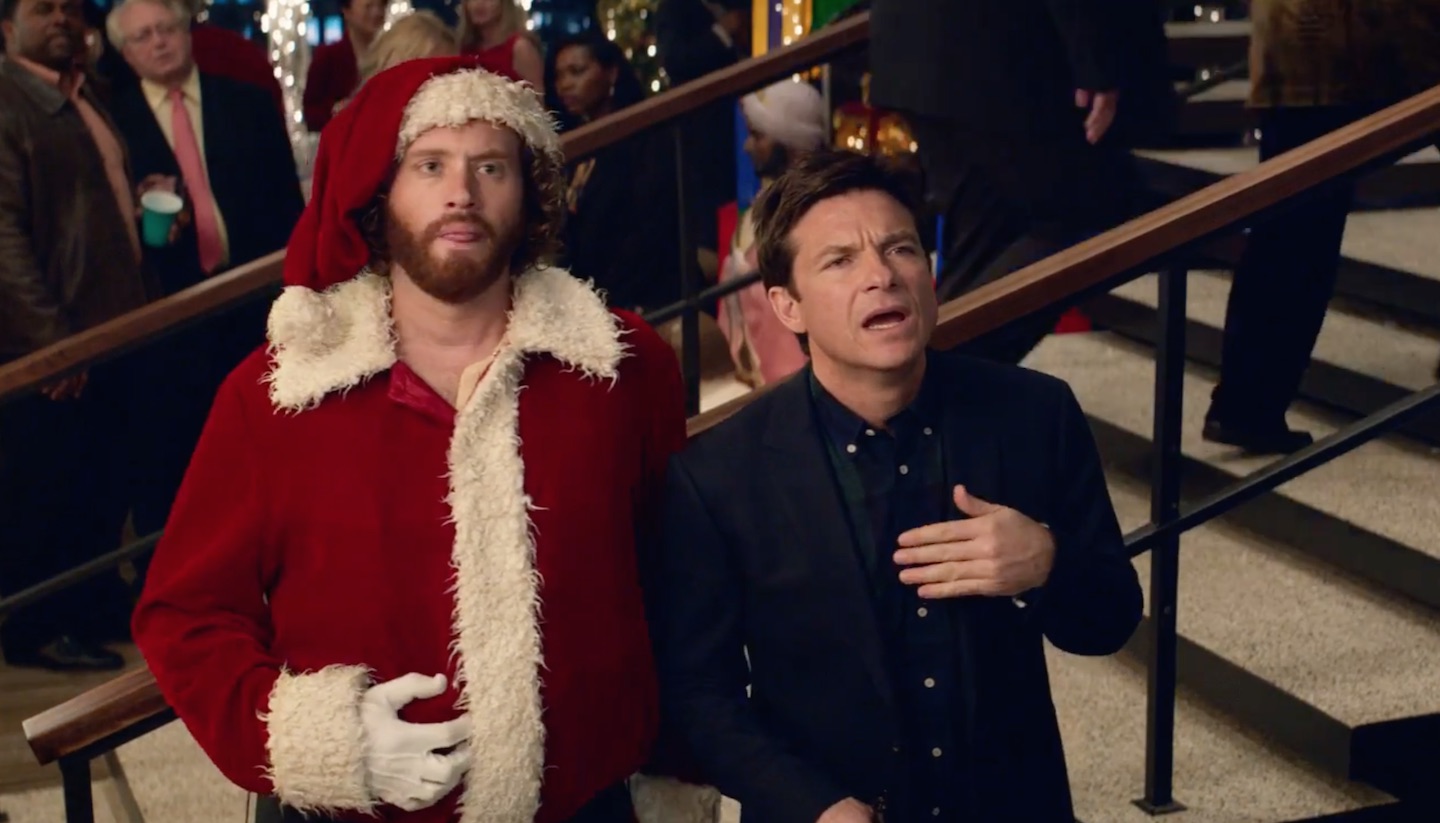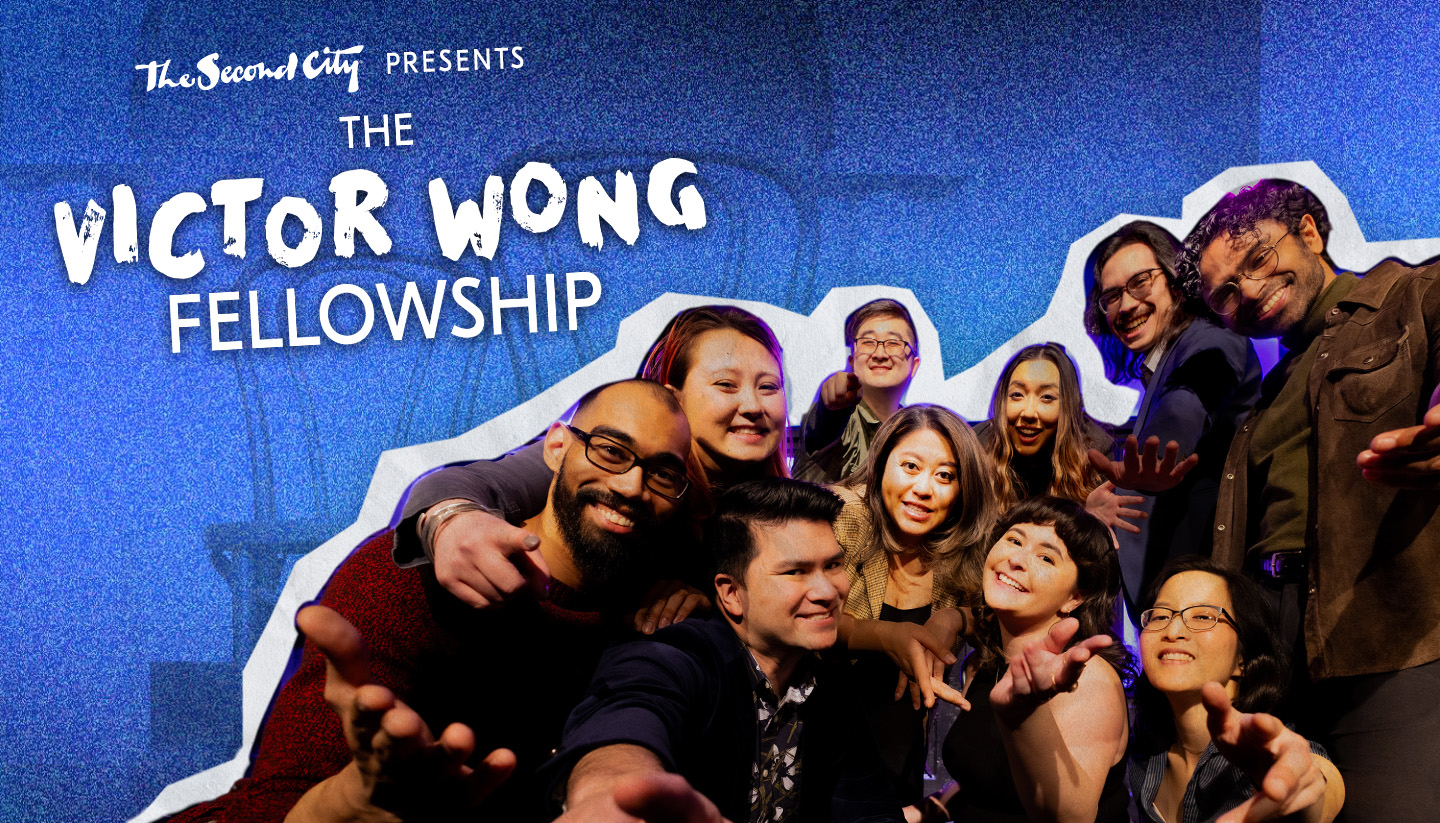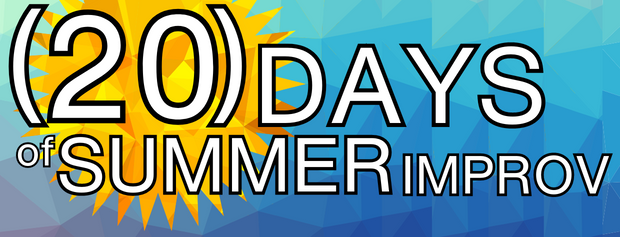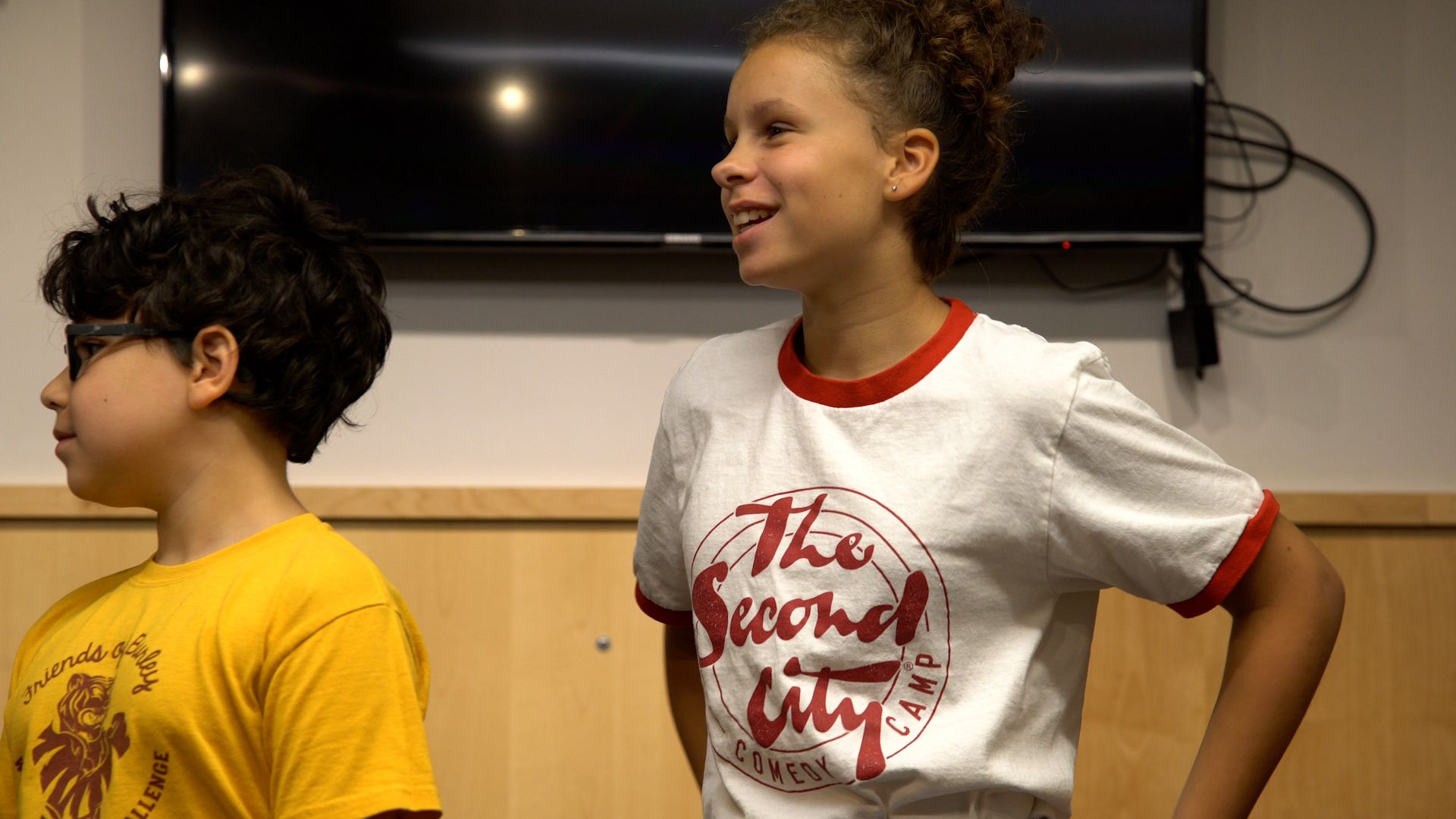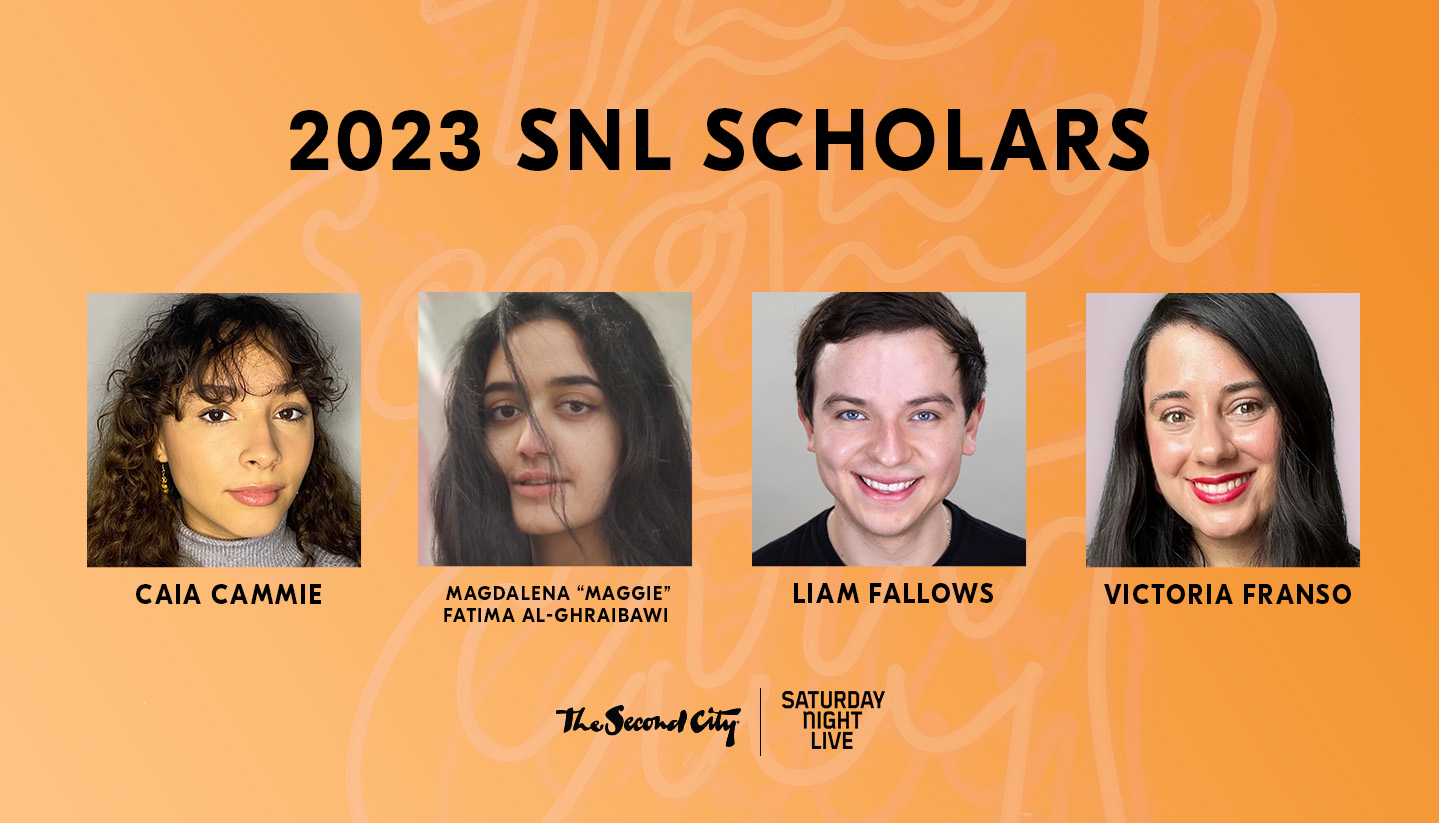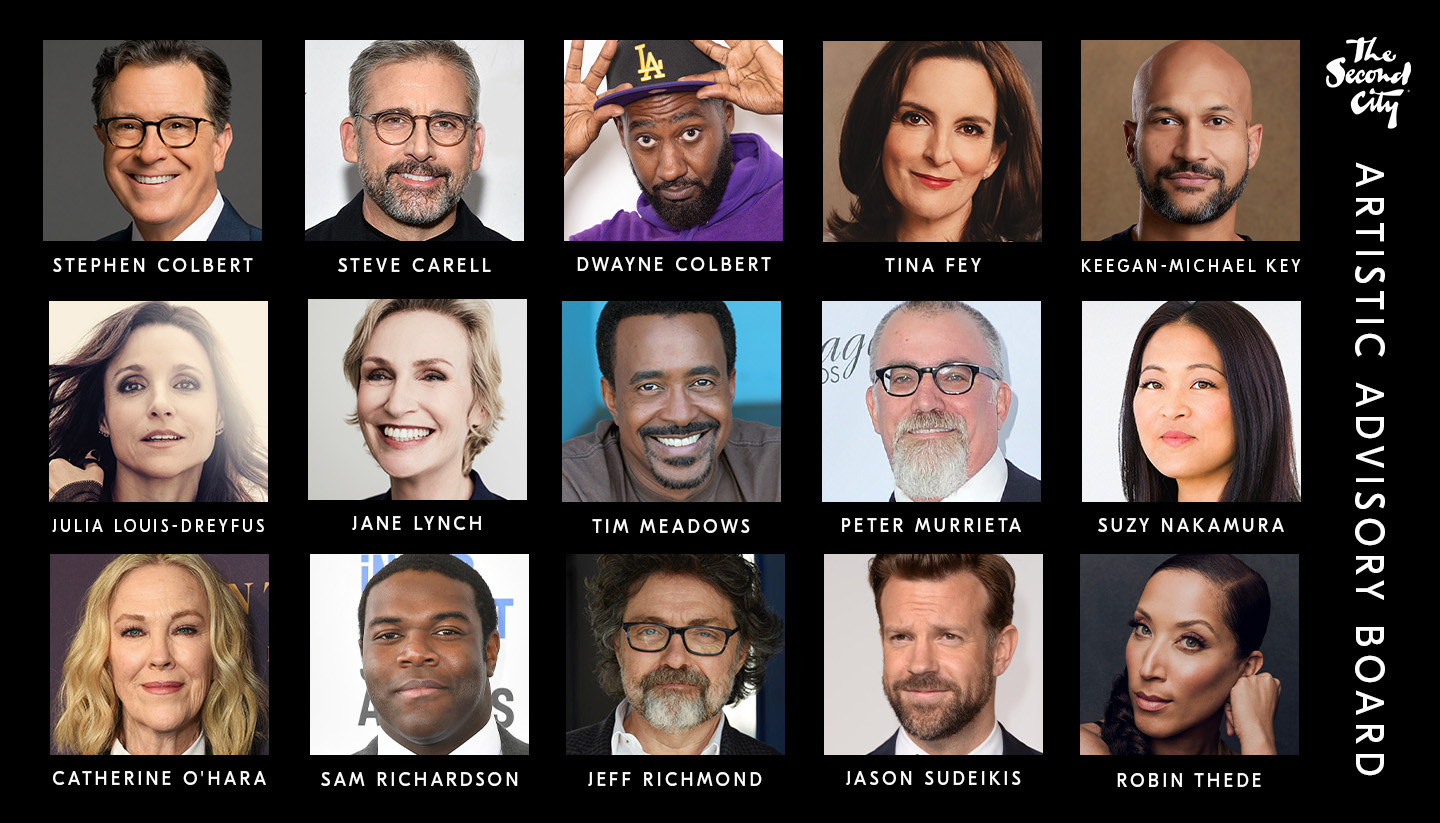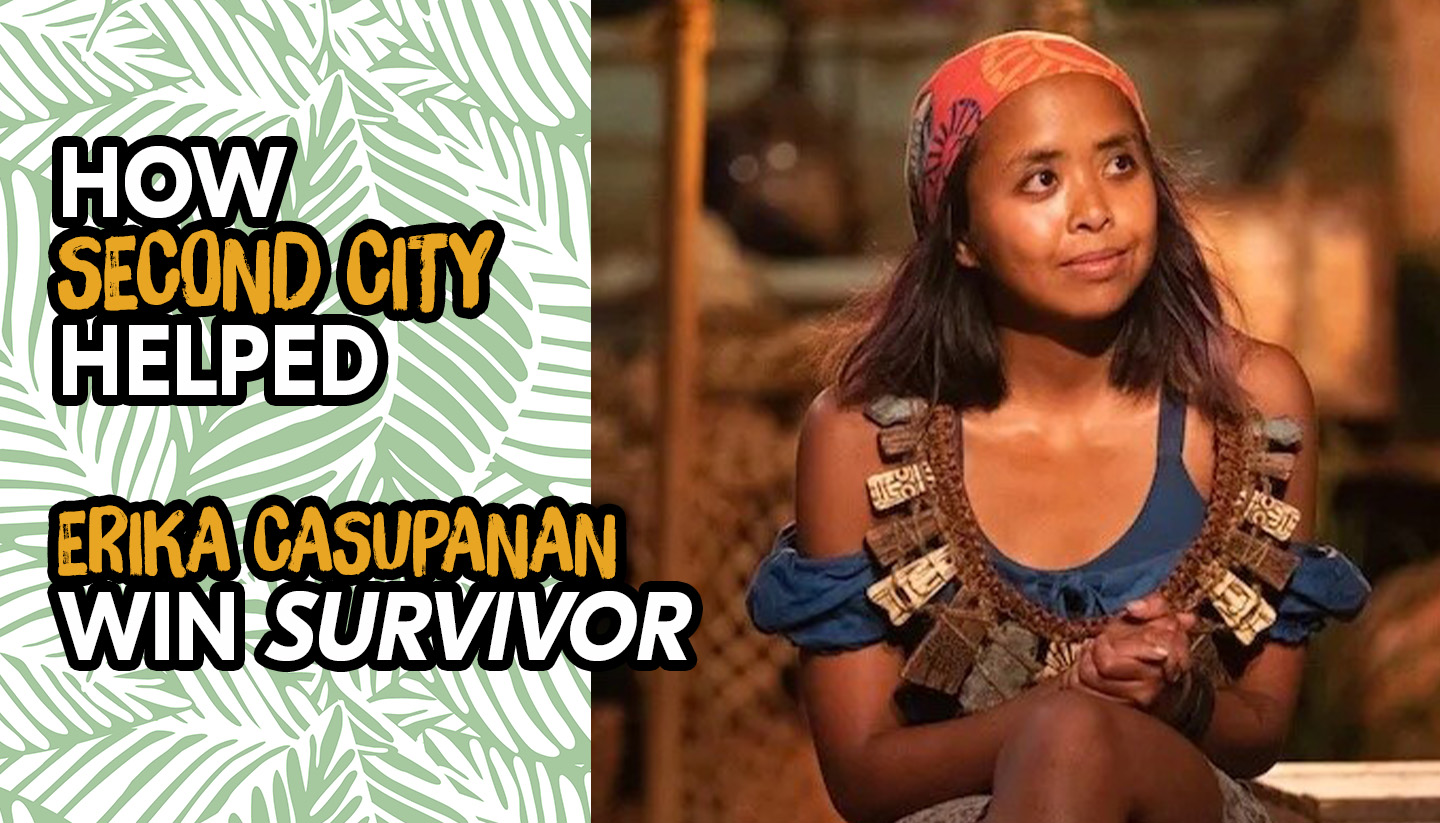“Office Christmas Party” is a swift kick in the holiday nuts, in the best way possible. When an office in the Chicago Loop is threatened with closure just a few days before Christmas, branch manager (Second City Touring Company alum and “Silicon Valley” star) T.J. Miller decides to throw the office holiday party to end all office holiday parties in a last-ditch effort to win a big client’s business. Things, you might guess, quickly spiral out of control: alcohol, drugs, some festive nudity, prostitutes, a very brave horse, shattered windows, guns, a car chase and Kate McKinnon in the worst holiday sweater of all time.
Comedy vets Jason Bateman and Jennifer Aniston co-star, along with the always-great Olivia Munn, recent Emmy winner Courtney B. Vance and a laundry list of who’s who in the current comedy scene, including Second City Mainstage vet Sam Richardson, SC TourCo alum Vanessa Bayer, Jillian Bell, Randall Park, Rob Corddry, Da’Vine Joy Randolph and Fortune Feimster.
The wild, “Animal House”-meets-“Office Space” proceedings are expertly controlled by directing team/ringmasters John Gordon and Will Speck (“The Switch,” “Blades of Glory”). The day after their special film screening and Q&A for Second City Training Center students, the duo sat down with me to chat about how they wrangled all that talent, kept the party going, and went from two NYU film students to Oscar nominees filming big, ballsy, hilarious Hollywood comedies.
JL: I’m curious about where comedy is at right now. With “The Hangover” series and movies like “Bad Teacher” and “Bad Moms,” was is it about people behaving badly that audiences like so much?
WS: I think it’s always fun to watch people get into situations that they have a hard time getting out of, especially when those situations have been created by themselves. In “The Hangover,” their intention was just to have a bachelor party and it went terribly wrong. In “Bad Moms,” they took a left when everyone in the community wanted them to take a right. Here, the idea that this branch is getting closed down around the holidays and it sort of feels like a fait accomplie, and they decide to step up and retaliate. There’s a little wish fulfillment in everybody. They want to believe in their own life that they can affect change and do something really unexpected and come out the other side a hero.
JL: You have a very diverse cast, with comedic roles being split pretty evenly between men and women. How did you go about casting these roles?
WS: We looked for people we wanted to work with as our first choice and pretty much got lucky enough to get them. We also did want to subvert the assumptions, like making the pimp a woman, even though she was written as a man. We cast Jillian Bell for that.
JG: We also wanted to explore the CEO of the whole company being Jennifer Aniston. The thing that’s appealing about an office Christmas party movie is that the cast system breaks down and that offices are very diverse, big places with lots of different stories and we wanted to tell those stories. Naturally, there was a good creative drive to be diverse both in gender and race.
JL: You have actors from a lot of different backgrounds. For example, you have Vanessa Bayer and Kate McKinnon from “SNL,” Da’Vine Joy Randolph is known for her Broadway work, and Courtney B. Vance is known for more dramatic roles. How did you get them all on the same comedic page, tonally?
JG: You’re trying to create a tone where all their talents can coexist. It’s kind of like an orchestra. You have big, bombastic characters and more subtle people. And that was important to us because you just don’t want a scene where everyone is doing the same type of comedy. Everyone comes at it from their own different place, and it makes the scene feel a little bit more alive to us when you can balance that.
JL: We’re always very curious at The Second City how you go from a kid with a dream to being where you are today. I know there are a lot of steps involved, but I’m curious about the steps between when you’re a film student to your first big success. For example, you were both were Oscar nominated for your short film “Culture.” What happened to get you to that point?
WS: A lot of waiting. A lot of tries and fails. It’s a different time now, with the idea that the thing you’re recording us on is something you can shoot a movie on. We didn’t have that. We went to film school at NYU in the 90s. Back then, the trajectory was—and it’s not totally different now—you know, you make short films and get those short films seen by any means necessary, like film festivals. So we made a lot of short films. A lot of them were experiments and a few of them did really well. Once that happened, we got really lucky and got signed at a commercial production company to direct commercials, which we considered another type of short film. And also we got hired to be writers. I think if you have a clear idea of something that you think is funny and comedic actors you can mount that with, there’s so many exciting examples. I just saw a trailer for “Search Party” on TBS and the way they started that is they just shot their own pilot with a bunch of people that were really funny and mounted it. There are even festivals now that will show a pilot presentation. So it feels like a better time than ever to get your voice heard.
JG: Even in our movie, Jillian Bell and TJ Miller were friends years ago and film homemade series and put them on the Internet. Like Will said, it’s best to just start doing it and not wait for people.
WS: And it feels like there’s the idea of the “path” to the Hollywood movie. It’s so subverted. It takes a really long time and a tremendous amount of work. It took a lot of time for us. We made a short film that had a lot of success and that was amazing, but we didn’t just jump into a movie. We had to spend a few years cutting our teeth in commercials and that work led to writing work, which led to meeting Ben Stiller and doing “Blades of Glory.” The path is subverted and long and difficult, but hopefully always gets you where you need to go.
JL: Is there anything you know now about the industry that you wish you had known when you were first starting out?
WS: I think to not be so precious about your ideas. We had a script we worked on for probably five years and didn’t show anybody.
JG: We were very self-critical. I think it’s best to put it out there and see. You learn so much by failure, in a good way. Having a fear of failure can be your worst enemy. I think also, be open to collaboration. You never know when you’re going to meet someone who you’ll do great work with.
WS: That was really helpful for us. Finding somebody who had a like sensibility and joining up. It can be a really lonely, depressing, scary and overwhelming thing to say you’re going to mount your life in show business. If you can find someone to strategize with, to be a fellow traveller with, to share a sensibility with, it’s a huge thing. And it’s never been a better time to do something great with your friends and having a chance to get it seen.
JL: What are one or two rules of a comedic screenplay that you always abide by?
JG: The biggest one is know why you’re writing the script. What is most important and connecting to you? For us in this movie, it was the idea that you have this office family that you spend all this time with and you never get to know, and one night a year you learn who they really are.
WS: And practically, stick to a three-act structure. No matter what happens, when you get into the editing room, you want there to be an established first act that’s a very traditional model. And it’s gotten shorter and shorter as the years have gone by. It used to be a 30-minute first act, now it’s a 15-minute first act. And then know that once you have a structure and a story in place, the comedy can come later. That can come from polishing, from actors reading it, or from improvisation on set. But having a very specific three-act story structure that’s very simple—and studying movies out there that do that really well—is the key to us to any foundation of any screenplay.
JG: Even with more artistic or experimental films, you can always see a [a three-act structure].
WS: Follow the fundamentals and don’t be afraid of something feeling traditional. You don’t have to break new ground in your form, let that come from the voice of the people that are in it, the style of comedy and what you’re speaking to.
JL: One of the most impressive things about the movie is how it’s such a great crescendo. It keeps building and building and the energy never dies. When you’re writing, how do you do that comedically? How do you keep heightening?
JG: You have to try to tell the real story first. Just a bunch of jokes strung together can be unsatisfying or it doesn’t build in the right way. There’s a great director, Sydney Pollack, who directed “Tootsie.” He always said, when you’re doing comedy, just treat it like a drama and make it really funny. For us, it was important that all the story arcs and the energy of the party as a whole are synchronized and build and build and build. And once you get that plan in place, you know where to put all the humor and outrageousness…and you can only sustain it at its high for so long before you go, “enough!”
WS: It’s kind of like boxing. You punch, you punch, you make a hit, then you go another round and you jump up another level. It was asking ourselves, what does the audience want to see when they hear this title? Are they seeing that? And how can we start to bend it and add ingredients that are surprising?
JG: You have to really go to the outer limits. If you promise an outrageous party, you really have to deliver it.
JL: Did you draw on any of your own party experiences, or office parties of the past?
WS: Josh and I love parties and we love when people dance, so we wanted there to be dancing. We wanted this idea of awkwardness and what that felt like when it was put into a big scale. Someone getting up and making a fool of themselves. Someone being vulnerable and professing their love to somebody. Somebody revealing something about themselves that’s upsetting. And the lengths you’ll go to impress people. Those were all things we set out to do. Those are the kinds of things we’ve experienced in our own very small way in the past and we wanted to capture it.
JL: Last question: Is Kate McKinnon’s sweater a real thing?
WS: We made it for the movie. Jason Sudeikis gave us the idea for a non-denominational holiday sweater, kind of a random thing. So we found a design from a 1980s sweater online and copied it.
JG: It’ll be for sale this Christmas season online.
Office Christmas Party is in theaters December 9th.
*This interview has been edited for clarity and length.

 Shows & Tickets
Shows & Tickets  Chicago Venue Info
Chicago Venue Info  Classes & Education
Classes & Education  Second City Works
Second City Works  Second City Network
Second City Network  Our Legacy
Our Legacy 




